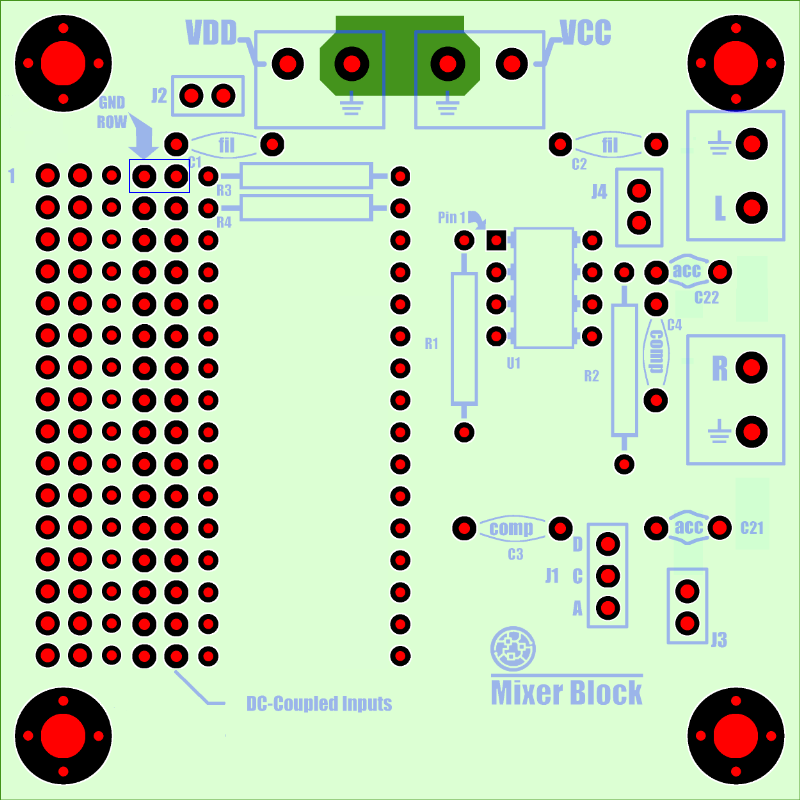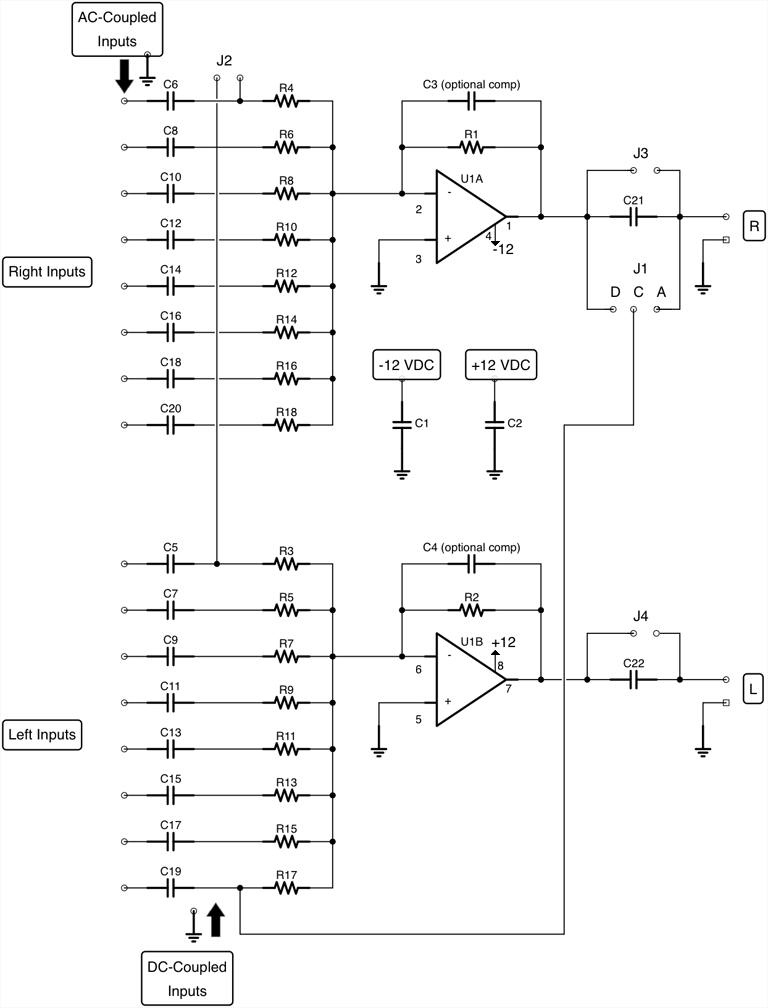§ 3.9 - DC-coupled Mono Dual Buffer or Amplifier
Back to → Main Mixer Block PageBefore you attempt this build, please:
- Read through the numbered build procedure with the idea of performing the listed steps in order
- Examine the PCB layout
- Examine the schematic diagram
- Refer to each of the linked pages in the "See also" list
This will help ensure that you will have the best possible experience, resulting in a build that works the way you expect it to.
This Mixer Block build is a DC-coupled, unity- or higher-gain, line-level, single-channel, mono, dual buffer.
It has one signal input, and two buffered or amplified outputs of that signal, one on the L output, and one on the R output. This provides for driving up to two sources without compromising signal levels or introducing crosstalk. If desired, one of the outputs may remain unconnected.
For instance, you might want to drive both an audio input, and a metering circuit from the same signal, but you don't want noise from the metering circuit to get into the audio, and you want to maintain the same level of drive.
Input impedance of this buffer/amplifier build is 10 k-ohms. However, the input resistors (R3, R4) are 20 k-ohms; this is because two inputs are in parallel, and the impedance is established as two, 20 k-ohms resistors in parallel into a (virtual) ground, hence the resulting 10 k-ohms total input impedance. Because of this, when building a gain amplifier, make sure that you provide the Amplifier feedback resistance calculator with 20000, not 10000.
If you build the Mixer Block for this role with 10 k-ohm input resistors, the input impedance will be 5 k-ohms. 10 k-ohms is standard for line-level signals.
Build Steps:
- C1—C2: .1 uF ceramic capacitor
-
C3—C4 optional: ceramic capacitors, only needed for op-amps that require compensation;
TLO-72 and TLO-82 op-amps do not require compensation. Refer to the specific op-amp's datasheet for design values - C21—C22: 10 uF ceramic or other non-polarized capacitor
- Choose Unity Gain Buffer or Gain Amplifier build, then:
- R3—R4: 20 k-ohms 1/8th watt resistors
- U1: TLO-72 low-noise op-amp, can substitute TLO-82, or similar. Observe polarity. An IC socket is strongly recommended.
- Install 3-pin jumper J1 — use .100 inch (2.54 mm) header pins; do not close
- Install 2-pin jumper J2 — use .100 inch (2.54 mm) header pins; close with a header jumper cap
- Install 2-pin jumper J3 — use .100 inch (2.54 mm) header pins; close with a header jumper cap
- Install 2-pin jumper J4 — use .100 inch (2.54 mm) header pins; close with a header jumper cap
- If you will be using a 2-pin input connector, mount it now at the dark blue box near C1; otherwise, connect the input and signal ground wires now
- Install connectors, quantity 4, optional: 5.08mm (.200 in) Spacing, 2-pin PCB Mount Screw Terminal Blocks. Or you can just wire the output from the indicated connections.
- Lastly, install M3 mounting hardware at all 4 mount points
| See also: | Recommended Tools Mounting to Wood Surfaces Mixer Block Parts Sources Wiring to Terminal Blocks |
Have a question? Ask us via email
, Previous Page . Next Page
o Ordering g Glossary s Sitemap u Updates

